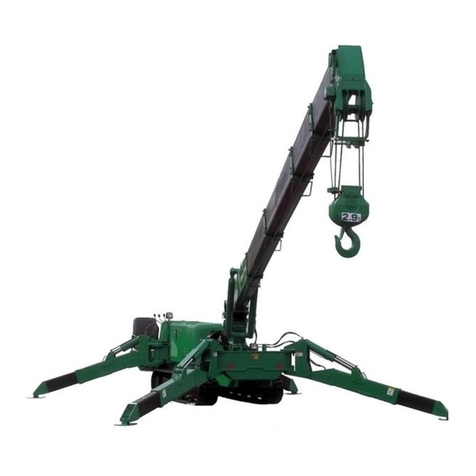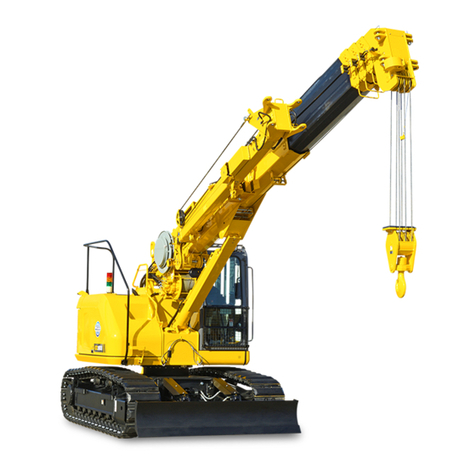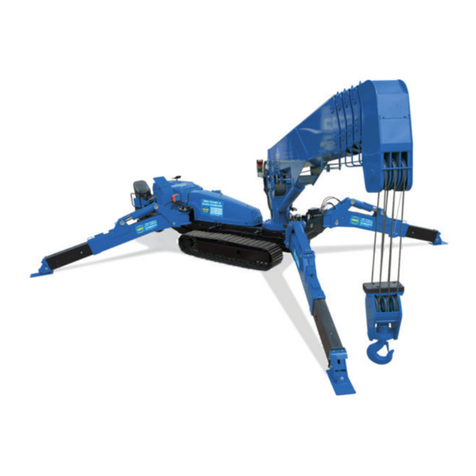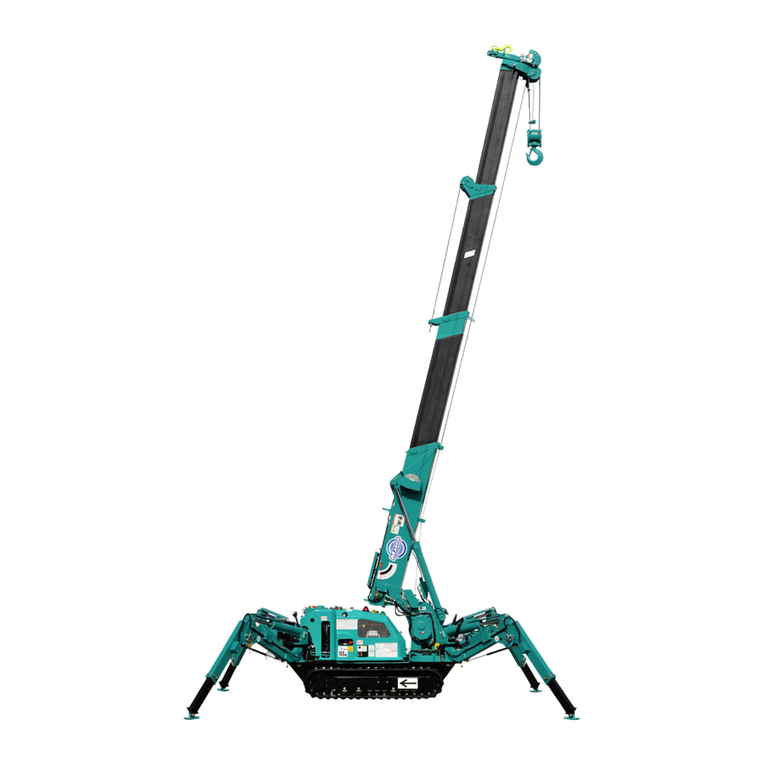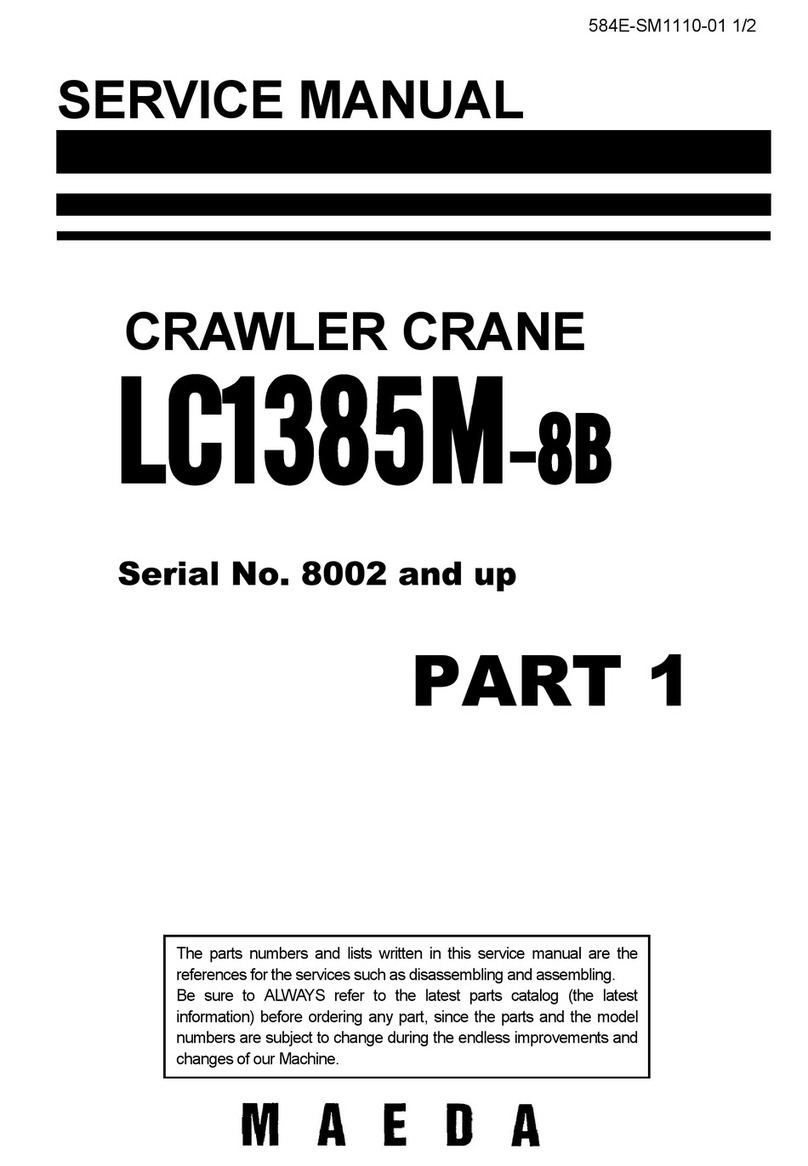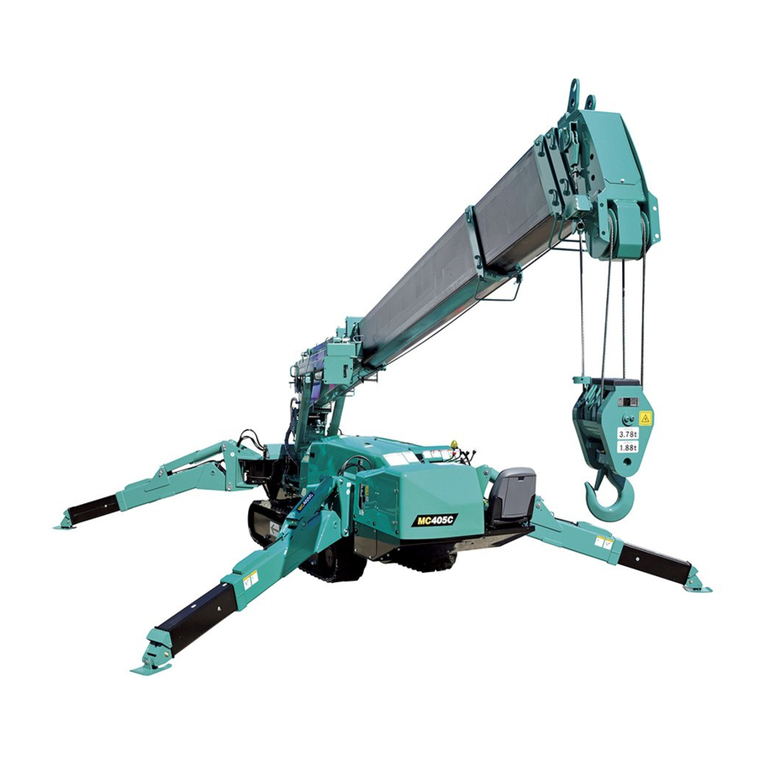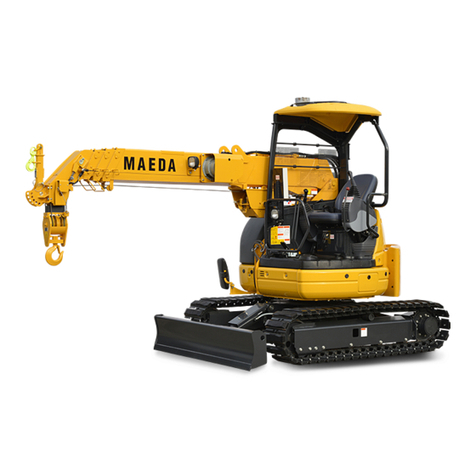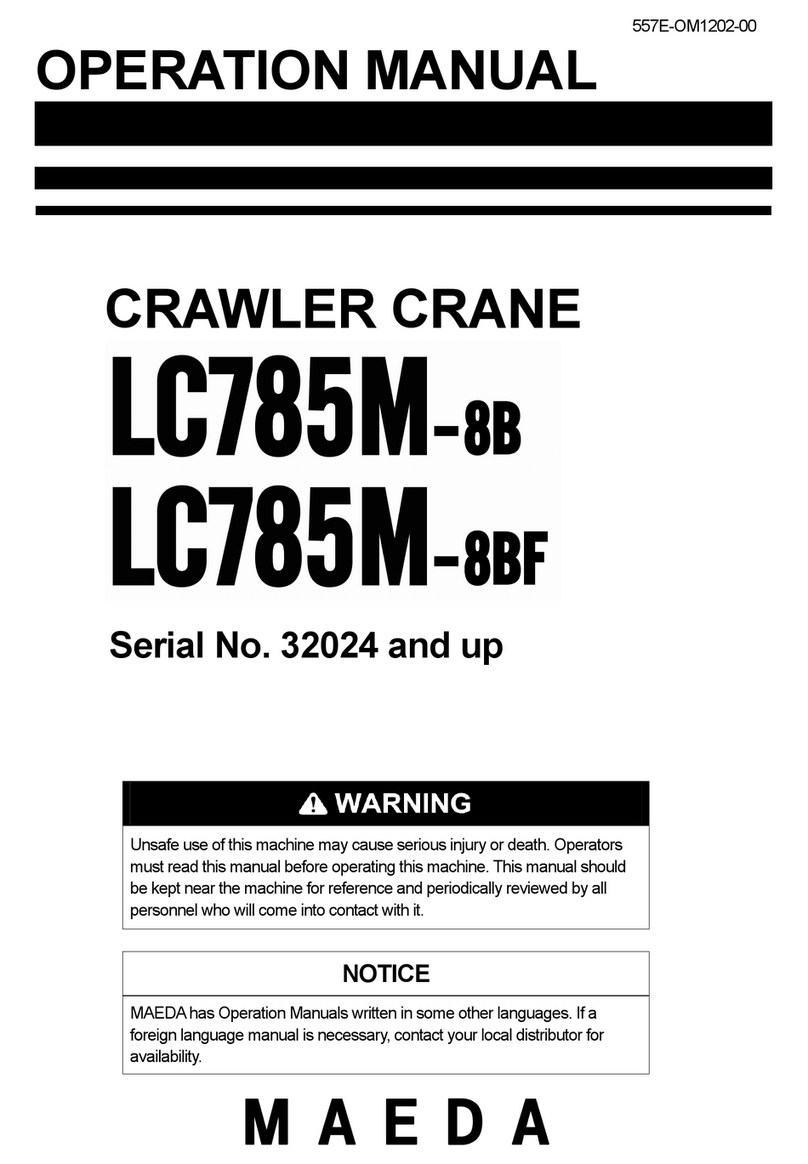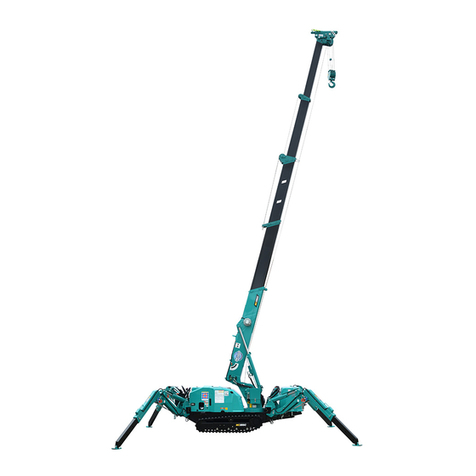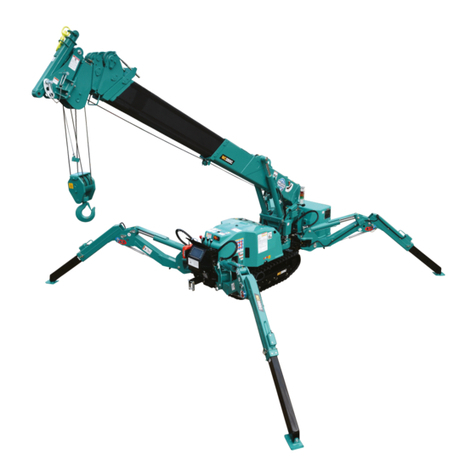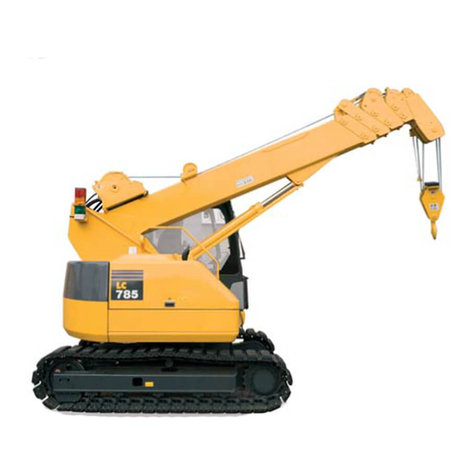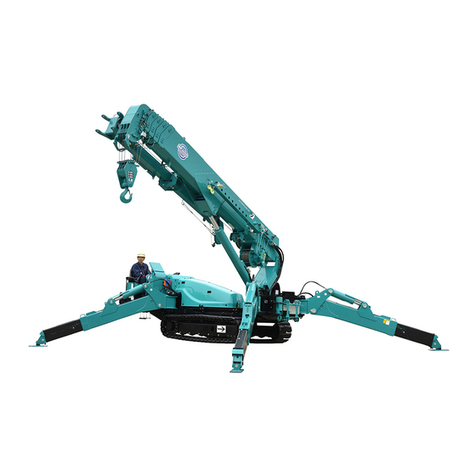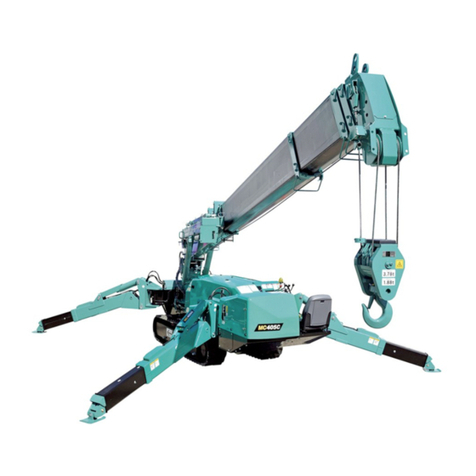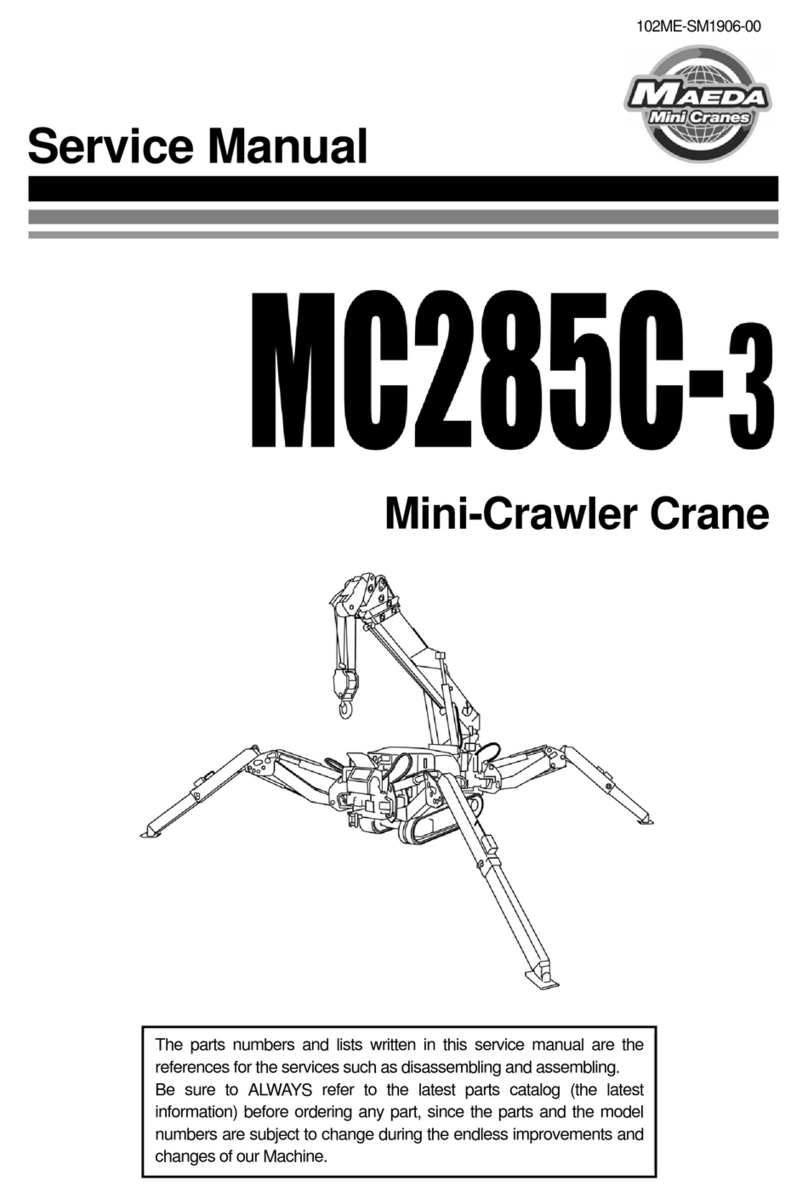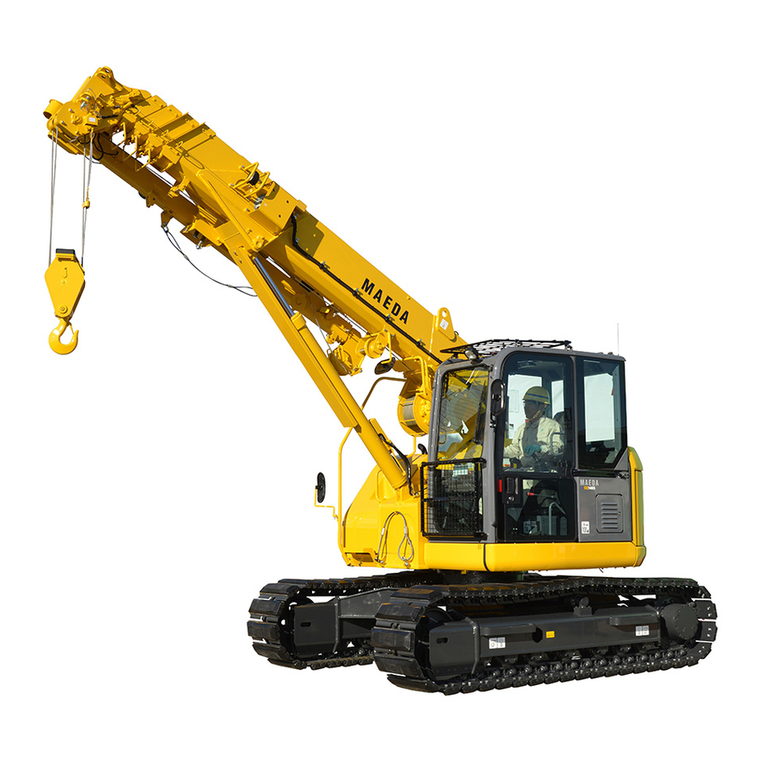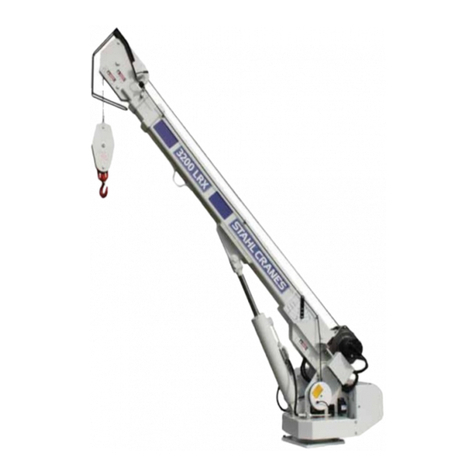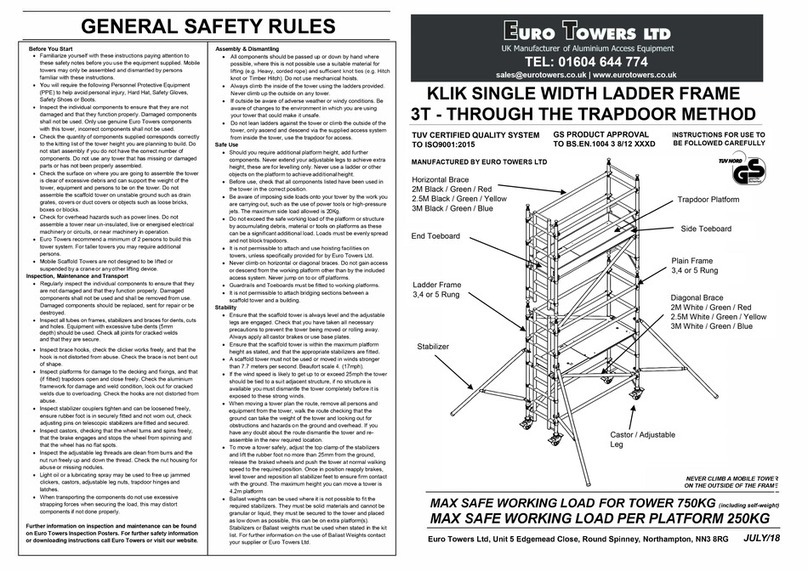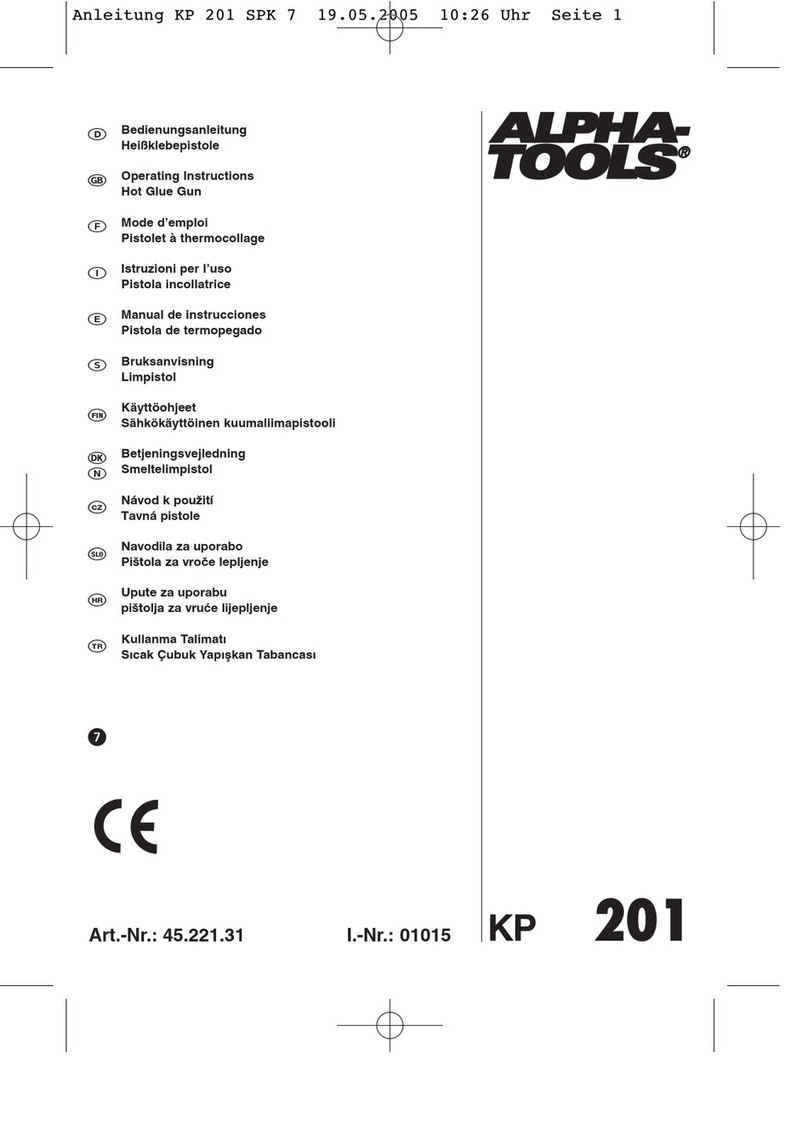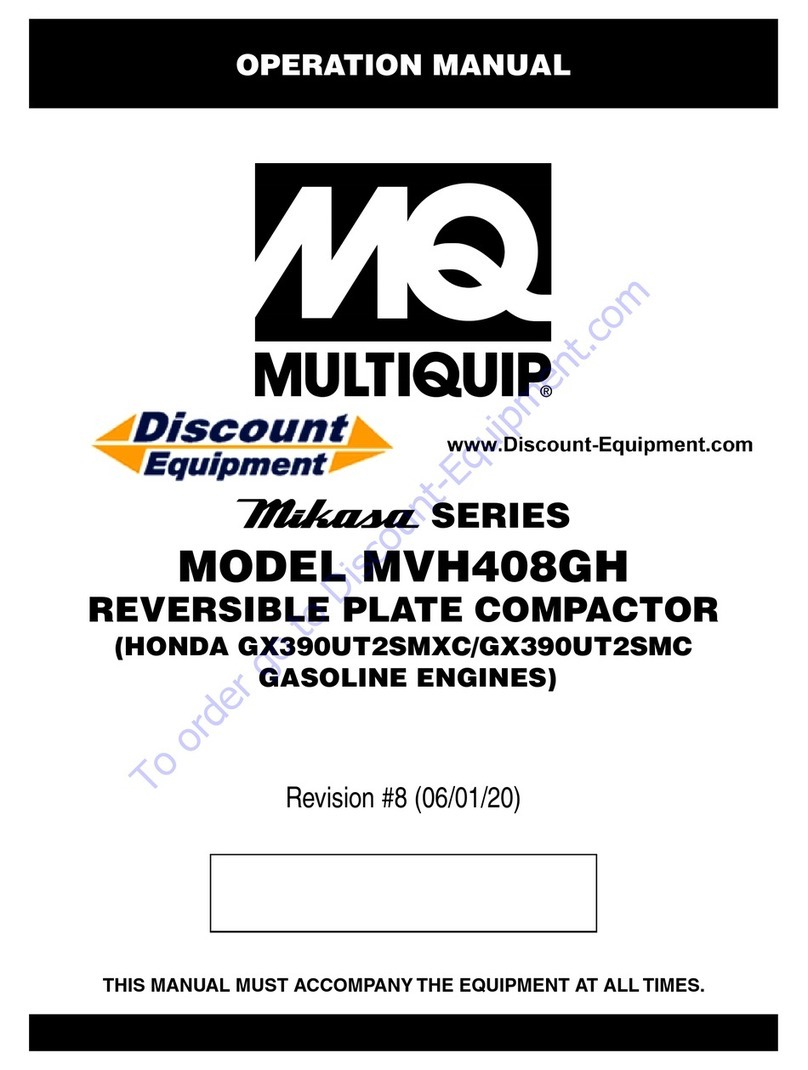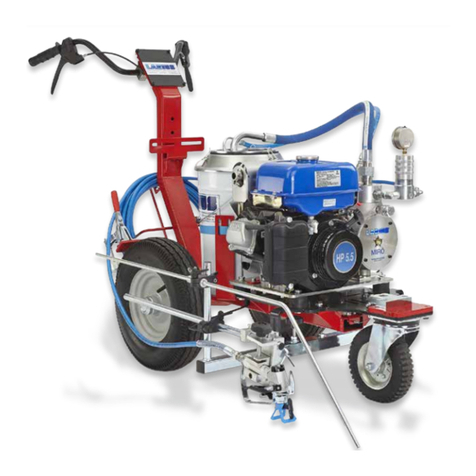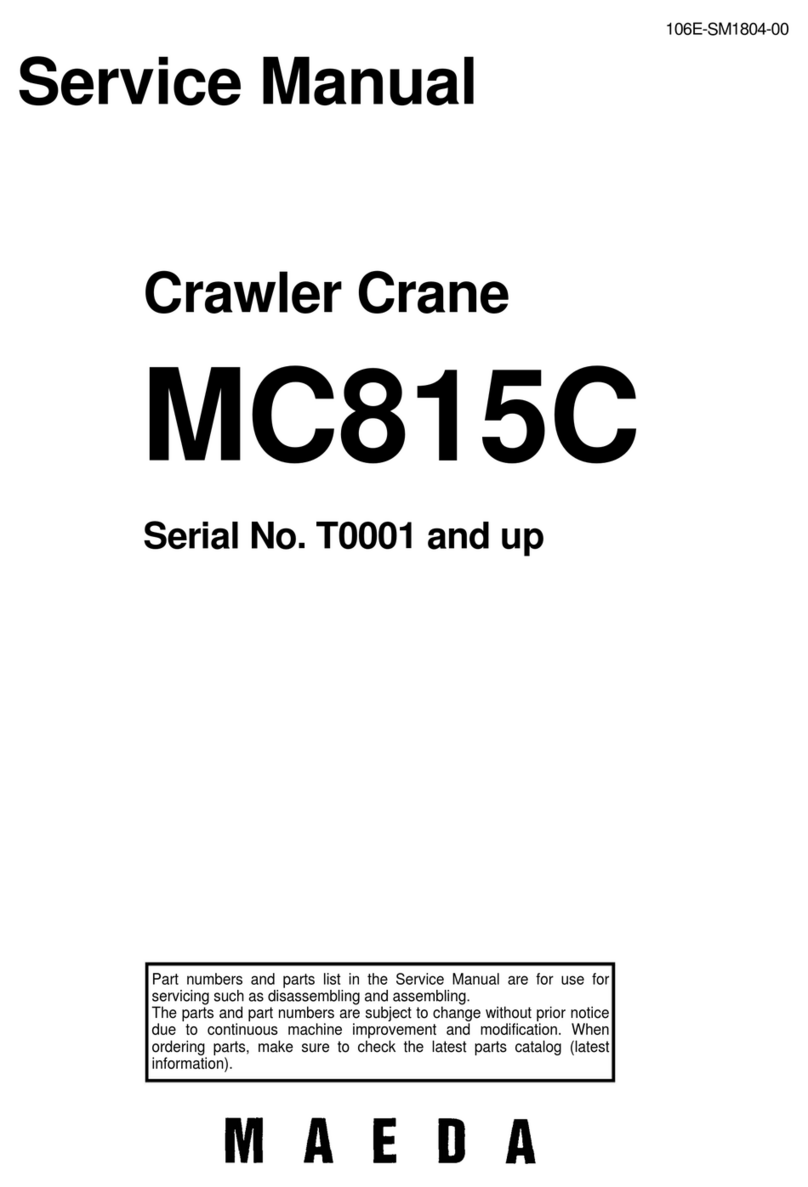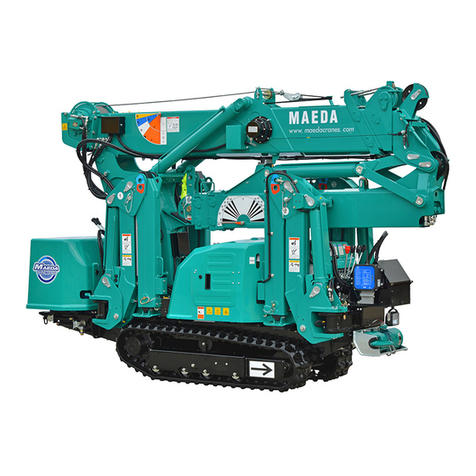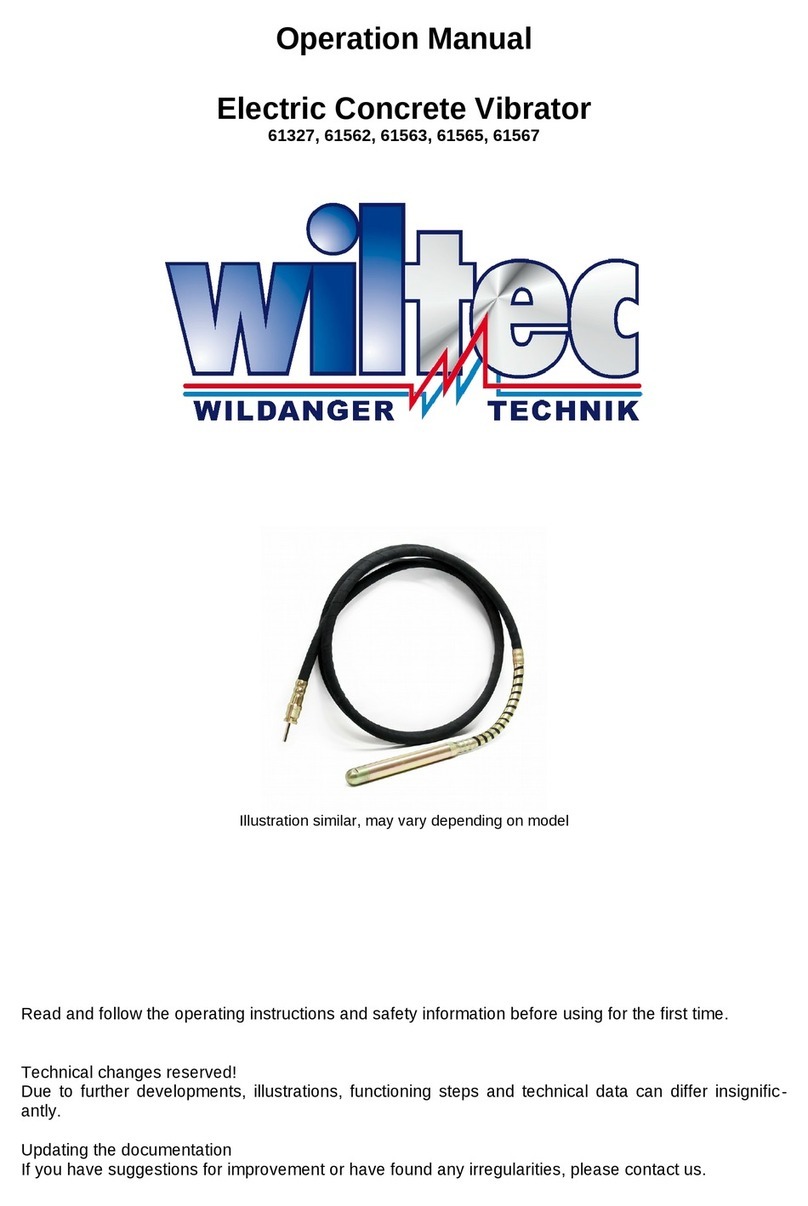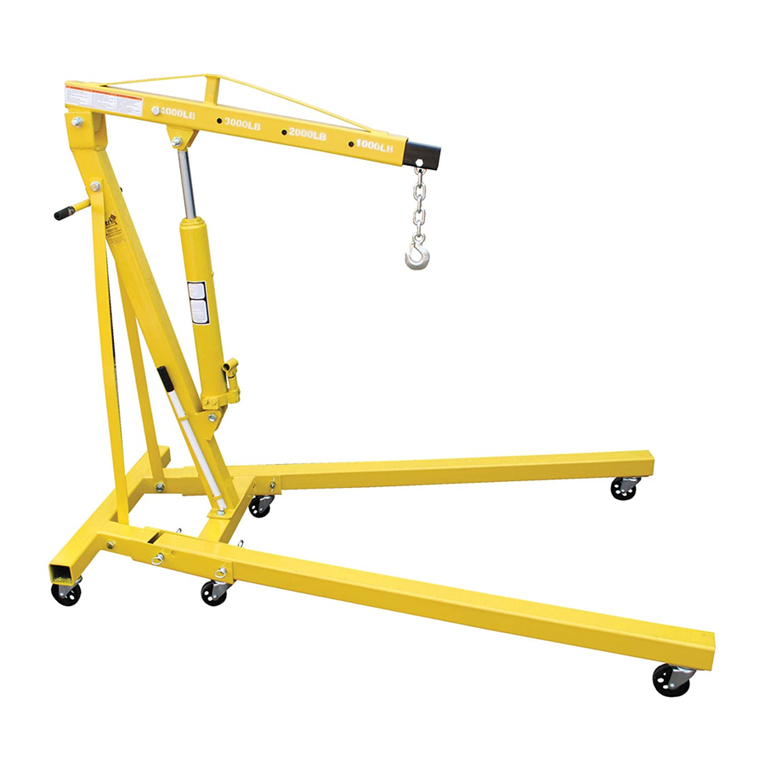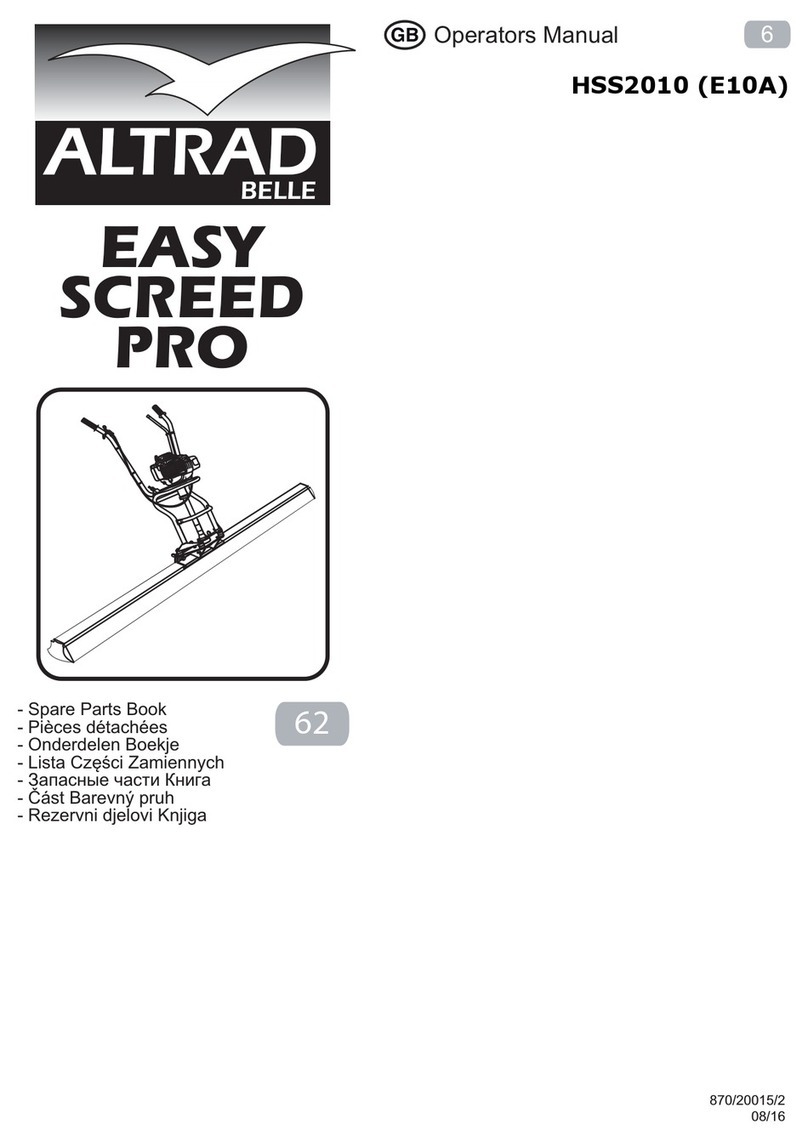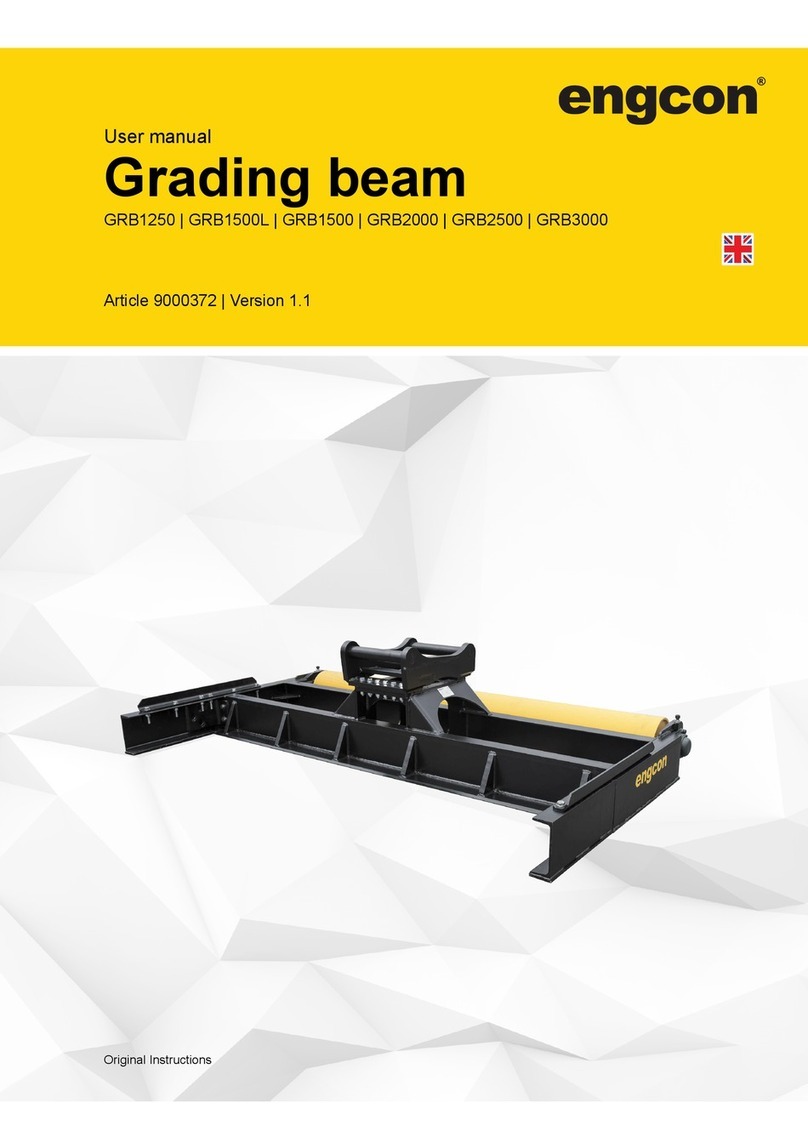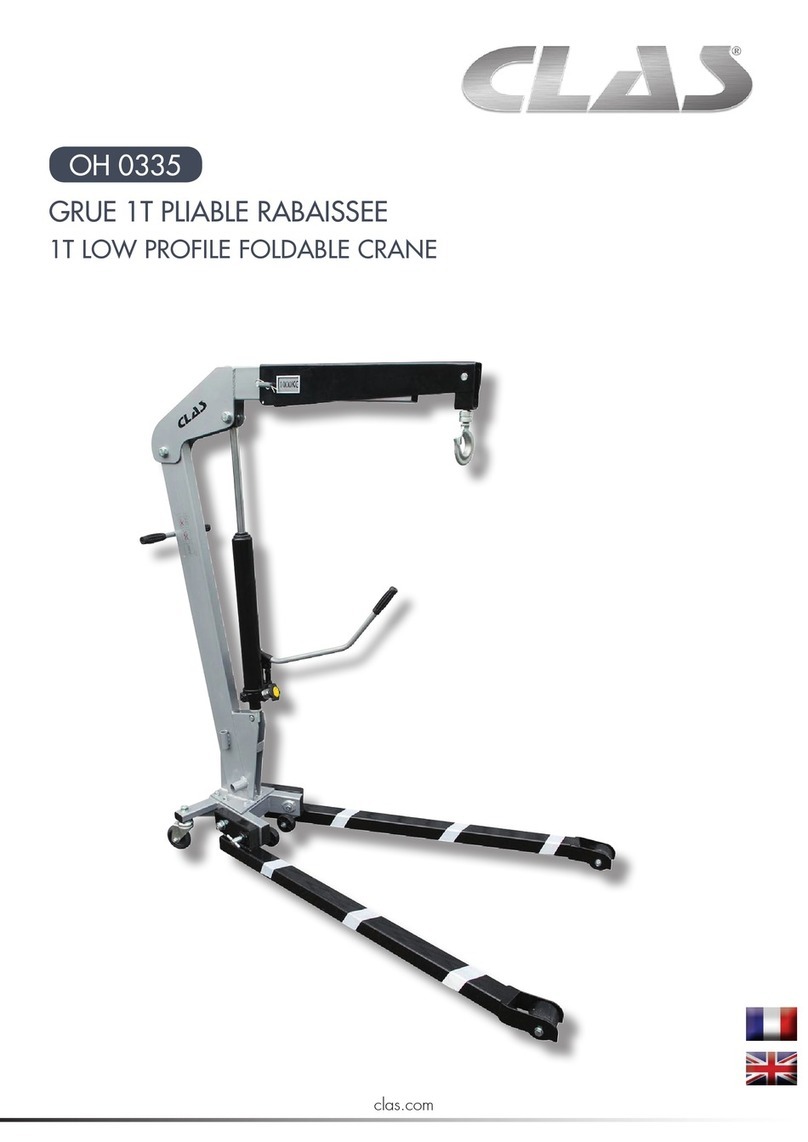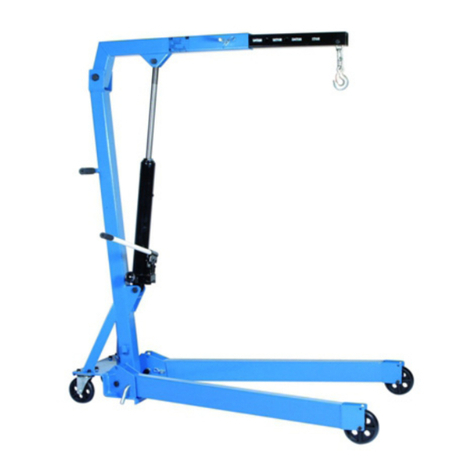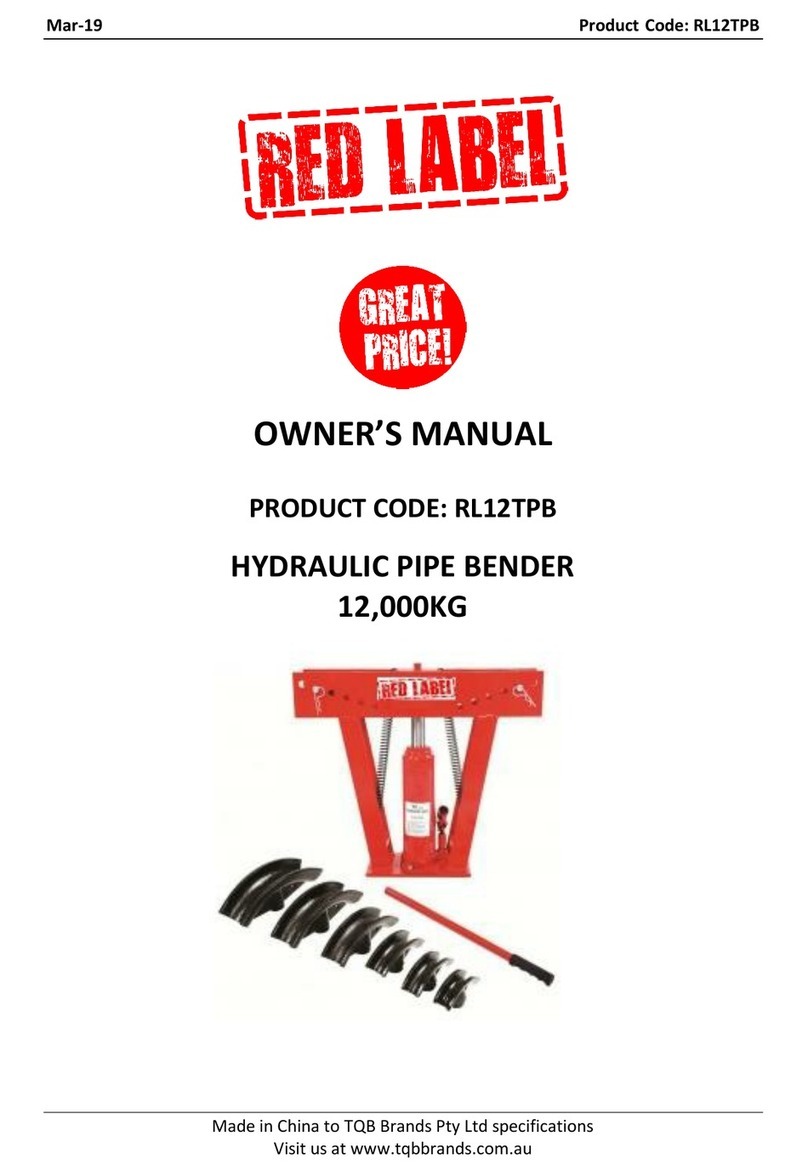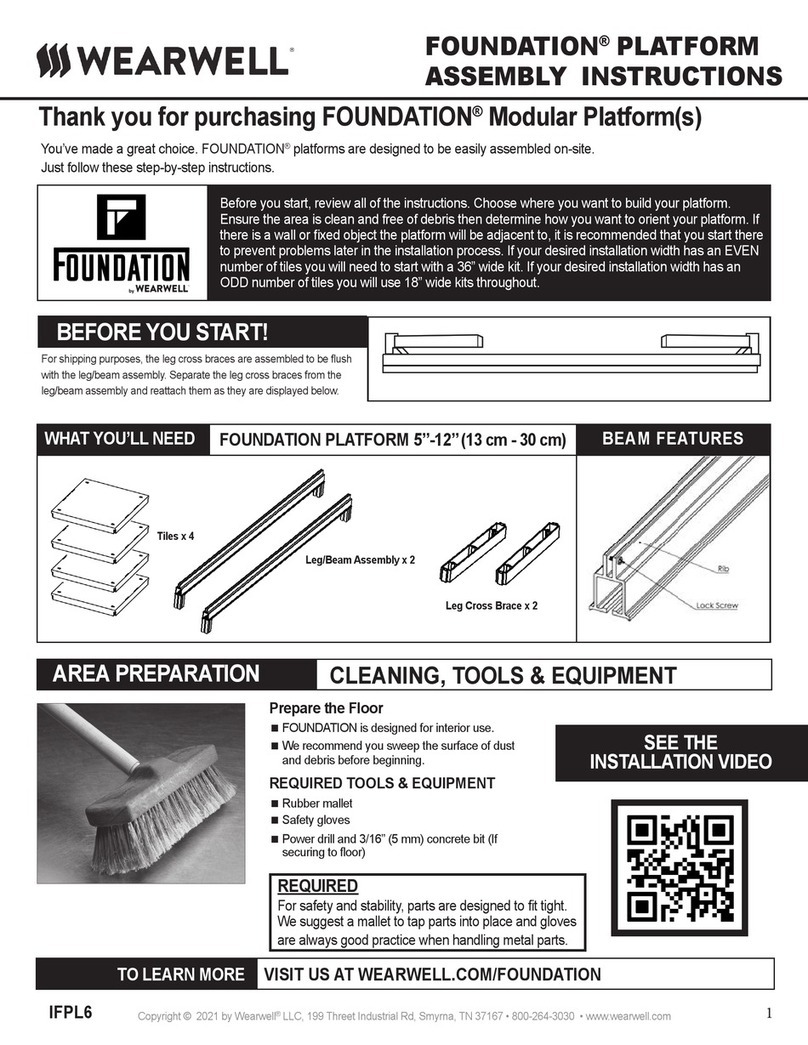
- 15 -
8.2 Rated Total Load Chart for Searcher Hook
Rated total load Chart with outrigger extended to maximum
1.830m BOOM 2.965m BOOM 4.205m BOOM 5.445m BOOM
Working
radius (m)
Rated
total load
(kg)
Working
radius (m) Rated total
load (kg) Working
radius (m) Rated total
load (kg) Working
radius (m)
Rated
total load
(kg)
Less than
1.00 300 Less than
1.00 300 Less than
1.30 300 Less than
1.70 300
1.30 300 1.30 300 1.50 300 2.00 300
1.55 300 1.50 300 2.00 300 2.50 300
-- -- 2.00 300 2.50 300 2.80 300
-- -- 2.50 300 3.00 300 3.00 300
-- -- 2.69 300 3.50 300 3.50 300
-- -- -- -- 3.93 300 4.00 250
-- -- -- -- -- -- 4.50 200
-- -- -- -- -- -- 5.17 150
Rated total load Chart with outrigger extended to other than maximum
1.830m BOOM 2.965m BOOM 4.205m BOOM 5.445m BOOM
Working
radius (m)
Rated
total load
(kg)
Working
radius (m) Rated total
load (kg) Working
radius (m) Rated total
load (kg) Working
radius (m)
Rated
total load
(kg)
Less than
1.00 300 Less than
1.00 300 Less than
1.30 300 Less than
1.70 300
1.30 300 1.30 300 1.50 300 2.00 300
1.55 300 1.50 300 2.00 300 2.50 300
-- -- 2.00 300 2.50 300 2.80 250
-- -- 2.50 300 3.00 250 3.00 250
-- -- 2.69 300 3.50 150 3.50 150
-- -- -- -- 3.93 100 4.00 100
-- -- -- -- -- -- 4.50 50
-- -- -- -- -- -- 5.17 50
1. This Rated Total Load Chart shows maximum allowable capacities. These rated total loads are based on
the machine standing level on a firm ground supporting surface, under ideal job conditions and a freely
suspended load.
2. Sufficient design tolerance must be used to ensure adequate ground support surface design. The rated
total loads are for static conditions only, and do not include dynamic effects of swinging , extending,
retracting, lowering, raising, wind or adverse conditions. Crane users must reduce rated total loads ratings
to take all conditions into account.
3. The load radius shown in the Rated Total Load Chart is based on practical working radius including boom
deflection due to loading. The crane user must calculate and compensate for boom deflection as the load is
lifted.
4. Deductions from Searcher Hook Rated Total Load must be made for the weight of the searcher hook
(10kg), block/ball and all rigging.
5. Crane users must consult the Operators Manual for complete details about assembly, operation,
maintenance, configuration, and its limitations. Modifications to the crane, other than what is specified or
supplied by the original equipment manufacture, can result in a reduction of rated total load ratings.
6. This operating range chart does not include boom deflections.

















